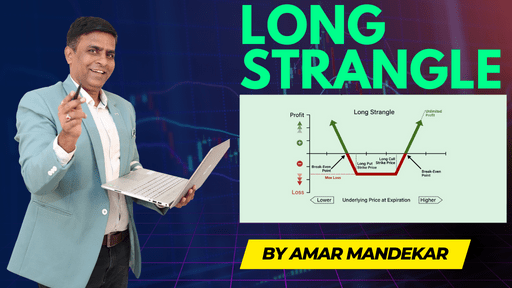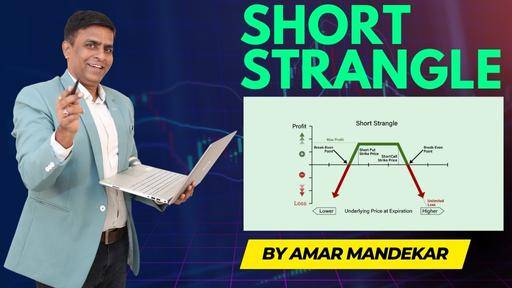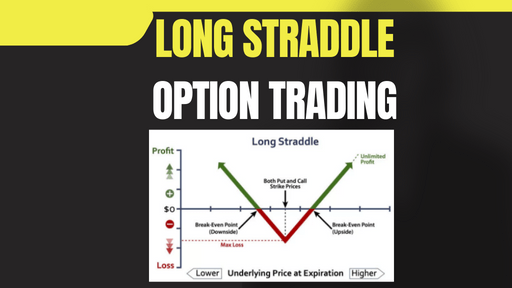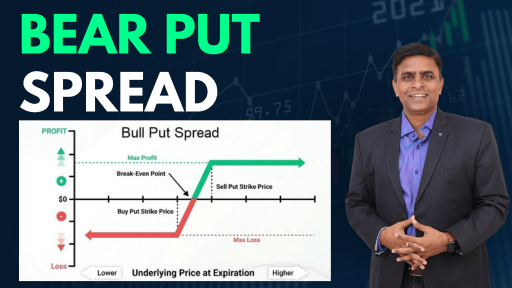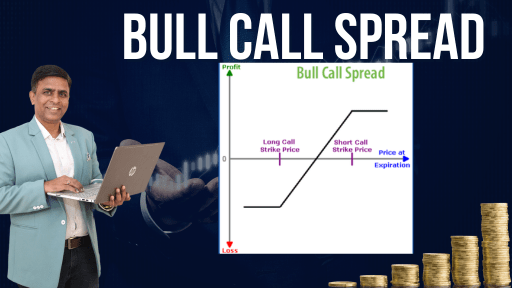Table of Contents
Introduction: Unveiling the Long Strangle
Welcome to the option trading, where skilled traders maneuver the dynamic market landscape to reap impressive rewards. Among the option trading strategies, the Long Strangle stands out as a unique and versatile approach. This strategy thrives on market uncertainty, utilizing the inherent volatility to create profit potential.
Key Points
- Strangle Definition: A Strangle is an options strategy where an investor holds both a call and a put option on the same underlying asset, but with different strike prices and the same expiration date.
- Directional Uncertainty: The Strangle is suitable when expecting a significant price movement in the underlying asset but uncertain about its direction.
- Long Strangle: In a long strangle, an investor buys an out-of-the-money call (higher strike) and an out-of-the-money put (lower strike) simultaneously. This strategy offers unlimited profit potential.
- Straddle vs. Strangle: Strangles are similar to straddles, but the latter involves options with the same strike price. Strangles are generally cheaper but require a bigger price move to be profitable.
- Pros of Strangle: The Strangle benefits from significant price moves in either direction, has unlimited profit potential, and can be cheaper than other options strategies like straddles.
- Cons of Strangle: Strangles require substantial price changes in the underlying asset, and there may be higher risk compared to other strategies.
- Real-World Example: For instance, using Starbucks stock, a trader buys a $52 call and a $48 put option, both expiring on the same date. Profits depend on the stock’s price movement.
- Calculating Breakeven: A long strangle has two breakeven points, calculated as the total cost of the strangle plus the call strike and minus the put strike.
- Risk Comparison: Straddles carry greater risk/reward compared to strangles. As the distance between the strike prices grows larger in a strangle, the risk decreases.
What is the Long Strangle?
The Long Strangle is an options strategy that involves the simultaneous purchase of a call option and a put option with the same expiration date but different strike prices. This dual-volatility approach allows traders to profit from significant price movements in the underlying asset, regardless of the direction in which it moves.

Unlike directional strategies that require predicting the market’s specific movement, the Long Strangle capitalizes on market uncertainty by betting on significant price swings. As long as the underlying asset experiences substantial volatility, this strategy can generate profits.
The Mechanics of the Long Strangle
To understand the Long Strangle better, let’s break down its mechanics step by step:
- Identify the Underlying Asset: Start by choosing the asset you wish to trade options on. This could be a stock, index, commodity, or any other asset with liquid options contracts.
- Analyze Market Volatility: Volatility is the key to the Long Strangle strategy’s success. Assess the asset’s historical volatility and potential for future price swings.
- Select Expiration Date: Choose an expiration date that aligns with your trading objectives and allows sufficient time for the asset to experience substantial price movement.
- Purchase Call Option: Buy a call option with a strike price above the current market price. This call option provides the right to buy the underlying asset at the specified strike price.
- Purchase Put Option: Simultaneously, purchase a put option with a strike price below the current market price. This put option grants the right to sell the underlying asset at the specified strike price.
- Cost Consideration: Keep in mind that you’ll be paying premiums for both the call and put options. Ensure that the potential profits outweigh the combined premium costs.
Riding High: When the Long Strangle Thrives
The Long Strangle strategy thrives under specific market conditions. Let’s explore scenarios where this strategy can unleash its true power:
1. High Volatility Environments: The Long Strangle excels when the market experiences heightened volatility. Sharp price movements in either direction can lead to substantial gains, making it ideal for earnings announcements, major news events, or market uncertainty.
2. The Straddle’s Counterpart: The Long Strangle is the sibling of the Long Straddle strategy, differing only in the strike prices of the options involved. While the Long Straddle uses options with the same strike price, the Strangle leverages options with different strike prices.
3. Big Price Swings: This strategy is most profitable when the underlying asset makes significant price swings. The greater the price movement, the more substantial the potential profit.
4. Uncertain Market Direction: Unlike directional strategies, the Long Strangle doesn’t rely on predicting market direction. It can generate profit regardless of whether the asset’s price rises or falls significantly.
The Downside: When the Strangle Falls Short
As with any trading strategy, the Long Strangle comes with its share of risks and limitations. It’s essential to be aware of the potential downsides before implementing this technique:
1. High Premium Costs: The purchase of both call and put options results in higher upfront costs (premiums). For the strategy to be profitable, the asset’s price must move significantly to offset these costs.
2. Time Decay: Time is not always on your side with the Long Strangle. As the expiration date approaches, the value of the options may erode due to time decay, especially if the underlying asset doesn’t experience significant price swings.
3. Volatility Requirements: While the strategy benefits from high volatility, low or stable market conditions may lead to losses, as the options may not appreciate in value enough to cover the premium costs.
4. Risk of Loss: As with all trading strategies, there is an inherent risk of loss. It’s crucial to manage risk through position sizing and risk management techniques.
Implementing the Long Strangle with an Example
To illustrate how the Long Strangle works in practice, let’s consider a fictional scenario:
1. Identify the Asset: We choose XYZ Corp, a highly volatile tech stock.
2. Analyze Volatility: XYZ Corp recently released a game-changing product, leading to increased market speculation and heightened volatility.
3. Select Expiration Date: We opt for options expiring in three months to allow ample time for significant price movement.
4. Purchase Call Option: With XYZ Corp trading at $100, we buy a call option with a strike price of $110.
5. Purchase Put Option: Simultaneously, we buy a put option with a strike price of $90.
6. Cost Consideration: The call option costs $300 (premium) and the put option $250 (premium), resulting in a total cost of $550.
7. Scenario A – Bullish Outcome: If XYZ Corp’s stock price surges above $110 at expiration, the call option becomes profitable. Let’s say it reaches $130. In this case, the call option is worth $2,000, resulting in a profit of $1,450 ($2,000 – $550).
8. Scenario B – Bearish Outcome: If XYZ Corp’s stock price plummets below $90 at expiration, the put option becomes profitable. Let’s say it drops to $70. The put option is worth $1,500, resulting in a profit of $950 ($1,500 – $550).
FAQs: Addressing Common Queries
Q: Can I Adjust the Strike Prices?
Absolutely! The beauty of the Long Strangle lies in its flexibility. You can adjust the strike prices to suit your risk appetite and outlook on the asset’s price movement.
Q. Is the Long Strangle Suitable for Beginners?
While the Long Strangle offers exciting profit potential, it may be better suited for experienced traders who can handle the complexities of dual-volatility strategies.
Q. Can I Close the Position Before Expiration?
Yes, you can close the position at any time before expiration to secure profits or limit losses. Keep in mind that the option’s value will be affected by changes in the underlying asset’s price and implied volatility.
Q. What If Volatility Is Low?
In low-volatility environments, the Long Strangle may not be as effective, as the options may not gain sufficient value to cover the premium costs. Consider other strategies better suited to such market conditions.
Conclusion: Seizing Opportunities with the Long Strangle
In conclusion, the Long Strangle is a potent weapon in the arsenal of options traders. This dual-volatility strategy thrives in uncertain market conditions, where significant price swings present opportunities for substantial profits.
However, as with any trading strategy, it’s crucial to exercise caution and manage risk diligently. The Long Strangle requires a keen understanding of market dynamics and the ability to predict significant price movements.
So, if you’re ready to embrace the excitement of riding market uncertainty and harnessing its power for potential gains, the Long Strangle might be your ticket to success. Combine it with a solid risk management plan, stay informed, and be prepared for market twists and turns. May your options journey be filled with fruitful trades and bountiful rewards!
Disclaimer:
The information provided in this blog post is for educational and informational purposes only. It should not be construed as financial advice or a recommendation to buy or sell any securities. Always do your own research and consult with a qualified financial advisor before making investment decisions.
Also Read : Options Trading Strategies You Must Master to Boost Your Success
External Sources : Long Strangle







